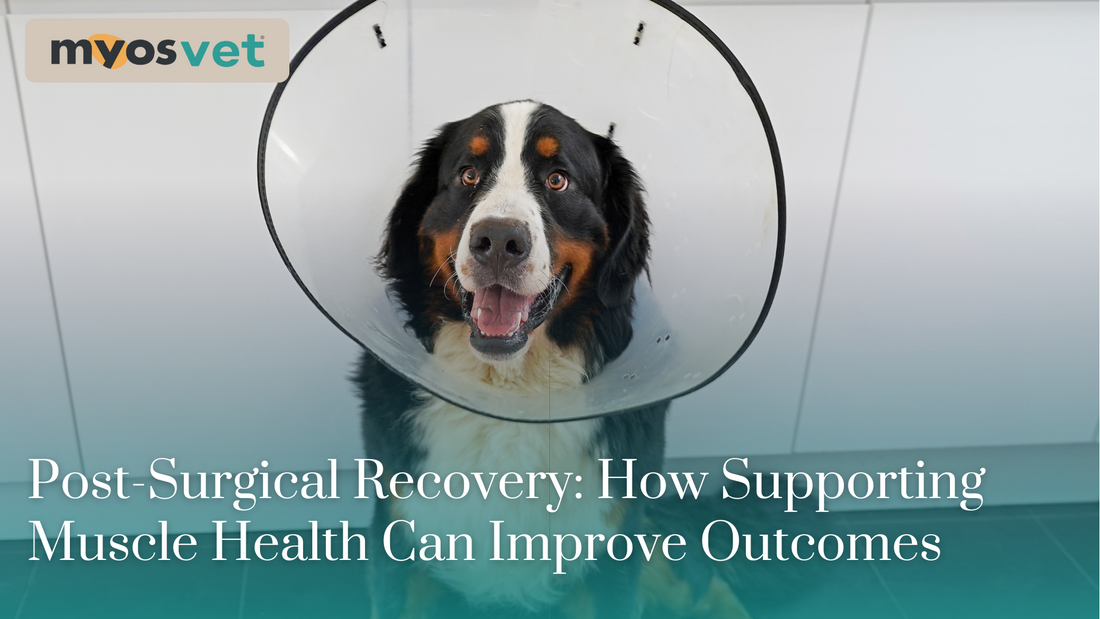
Post-Surgical Recovery: How Supporting Muscle Health Can Improve Outcomes
Share
Surgical intervention—whether for orthopedic injuries, spinal issues, or soft tissue conditions—is a critical part of veterinary care. But surgery is just the beginning of the journey. What happens in the weeks and months following a procedure can dramatically influence the outcome. One often overlooked, yet essential, component of this recovery process is muscle health.
The Cost of Inactivity
After surgery, animals are typically prescribed rest and restricted movement to protect healing tissues. While necessary, this period of inactivity can lead to rapid muscle atrophy, especially in older pets or those already experiencing mobility issues. Even brief periods of disuse can result in measurable muscle loss, which can delay recovery, reduce mobility, and ultimately impact long-term quality of life.
Why Muscle Health Matters in Recovery
Healthy muscle tissue plays several roles in post-operative recovery:
- Stabilization of joints: Muscles help support and protect healing joints and bones.
- Mobility: Retaining muscle mass allows pets to begin moving sooner and more confidently.
- Metabolic support: Muscle tissue contributes to metabolic health and helps support immune function, both crucial during recovery.
For veterinary professionals, this means that monitoring and supporting muscle health isn’t just a secondary concern—it’s a central part of a successful recovery strategy.
Integrating Muscle Support into Recovery Plans
A comprehensive post-surgical protocol should include:
-
Nutritional Support
Adequate protein intake is foundational, but certain supplements may also help maintain or support muscle tissue. Fortetropin®, a natural ingredient derived from fertilized egg yolk, has been shown in veterinary clinical studies to influence muscle metabolism. Incorporating muscle-supportive nutrition early in the recovery period may help limit the extent of disuse atrophy. -
Tailored Rehabilitation Programs
Physical therapy and controlled exercise are critical for re-engaging muscle groups safely. Veterinary rehabilitation professionals can help design customized programs that gradually build strength without jeopardizing the surgical site. -
Early Monitoring
Vets should proactively monitor muscle condition using tools such as body condition scoring, muscle condition scoring (MCS), and even ultrasound or tape measurements when appropriate. Early detection of atrophy enables faster intervention. -
Client Education
Pet owners play a major role in recovery. Educating them on the importance of maintaining muscle mass and following through with rehabilitation and nutritional support can significantly impact outcomes.
Muscle Support as a Standard of Care
As surgical techniques continue to evolve, so should our approach to recovery. Veterinary professionals have the opportunity to enhance post-surgical outcomes by prioritizing muscle preservation alongside wound healing and pain management.
Incorporating muscle support as a standard part of post-operative care doesn’t just benefit the patient’s body—it improves their overall experience, speeds up their return to normal function, and ultimately enhances the success of the surgery itself.
